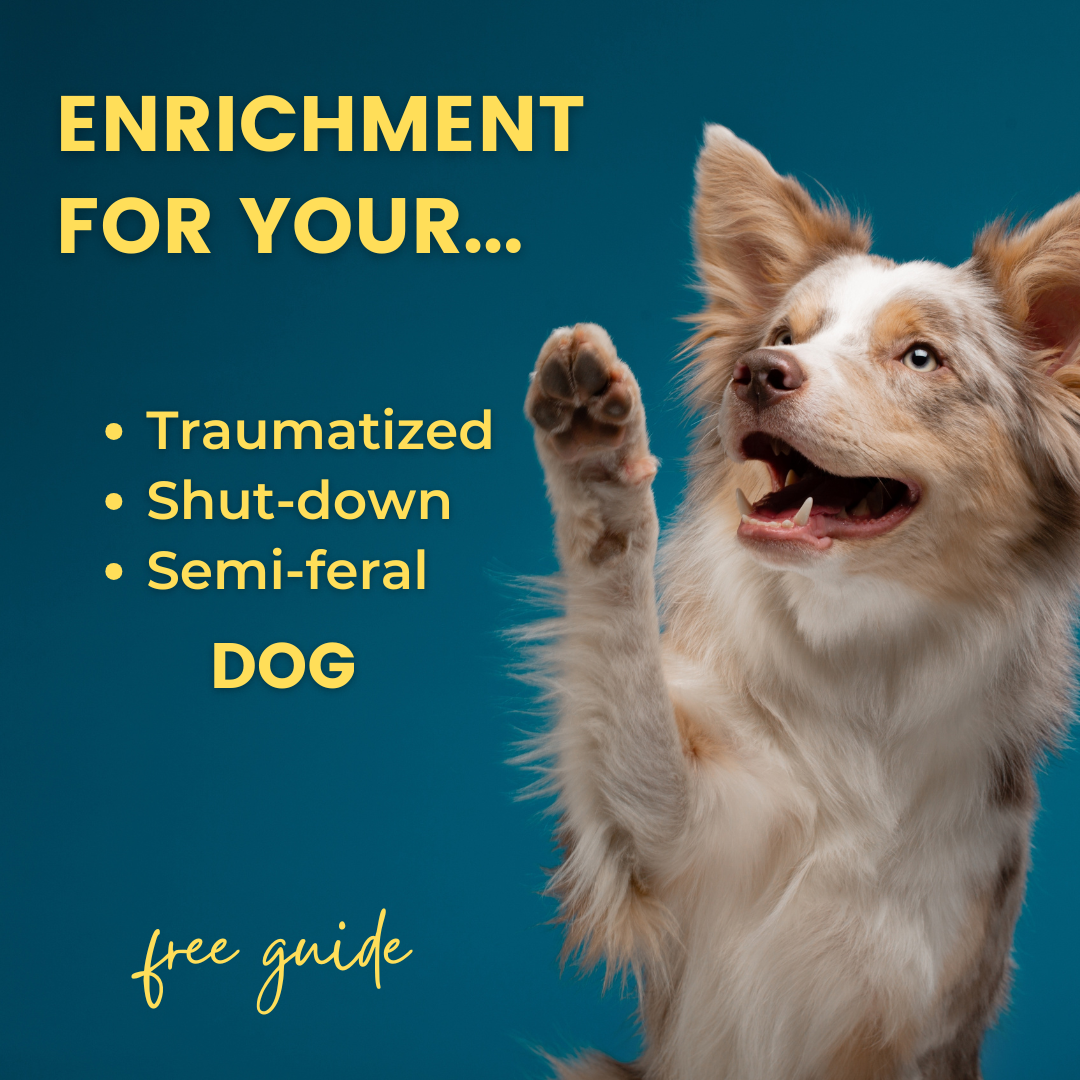
I asked members of our free Facebook support group, “What does your dog look like when they’re confident?” One answer they came up with was, “When my dog plays.” So this week, I talked about how to teach your fearful dog to play.
You Can’t Reinforce “Confidence”
You’ll often see advice online that you should build your fearful dog’s confidence, or help them become more optimistic. But confidence and optimism aren’t behaviors, so you can’t reinforce them- at least, not directly. So how can you help your fearful dog?
To build confidence, I think our best bet is to teach dogs behaviors they need to navigate their world successfully and to have more positive experiences. In last week’s video I go over this topic in more depth. Last week’s example showed how to use positive reinforcement to increase sniffing behavior. This week, I show you examples from our experience teaching our fearful dog Pancake to play with toys.
Training Confident Behaviors Example: Playing!
Many fearful dogs don’t engage in any behaviors that we would call “play.” How can we get them started? When Pancake came to us, he showed little interest in anything, including people, dogs, and toys. I wanted him to play, because I wanted him to have activities he enjoyed in his life. I also knew that some play behaviors make handy alternatives to fearful or aggressive behaviors.
In order to train a dog to play, you need to have a few details worked out ahead of time:
1) What do you mean by “play”? What behaviors? For Pancake, I started with the goal of having him roll, push, bite, or otherwise interact with toys.
2) In what situations do you want your dog to do these play behaviors? I was happy to have Pancake play in his “safe zone” at home at first. Later, I wanted to generalize play behavior to situations in which he sometimes behaves aggressively- especially around people.
3) How will you reinforce play behavior? Play could be automatically reinforcing- that is, it’s just fun for the dog, and you don’t need to add anything. But some play behaviors could be reinforced by social interaction, say with you, or other dogs. And some play could be reinforced with tangible reinforcers like food.
Pancake Learns to Play
When teaching Pancake to play, our goal was for him to interact with toys at home, and around people. I started with food puzzle toys, because I wanted the potential reinforcers (treats) to be available in my absence. Early on, Pancake wouldn’t exit his crate when I was present, so we needed reinforcement to happen without my involvement.
The steps we used in Pancake’s “playing with food toys” training were:
1) Provide many easy food toys in his “safe zone”, and then leave the room. The food toys in this early training were soft rubber or fabric, so they didn’t make much noise when moved. And they were “easy” in that treats fell out of them with only a little bit of effort on the dog’s part;
2) Add small environmental changes that we wanted Pancake to be comfortable with. For example, we opened up the fencing around his “safe zone.” He was reluctant to leave that area at first, but Scent Work and food toys placed around the edges of his safe zone prompted him to explore just a little more than he had previously;
3) Place some food toys outdoors;
4) Provide food toys in novel locations (in our case, a new house);
5) Start to offer food toys in the same room I was in, or my husband was in.
As you can see in the video, Pancake has mastered several food toys at this point and he will readily engage with food toys around me and my husband, and even sometimes around strangers!
If you’d like a trainer on-call to answer your training questions, join our monthly training membership, or sign up for private training, and get the support you need.
Categories


Have a dog who is too anxious to have fun? Grab this free guide & video lesson all about how to teach your extremely fearful dog their 1st enrichment game.


Community
We offer a free private Facebook support group for owners of fearful dogs to connect and share their stories. Join us there.


